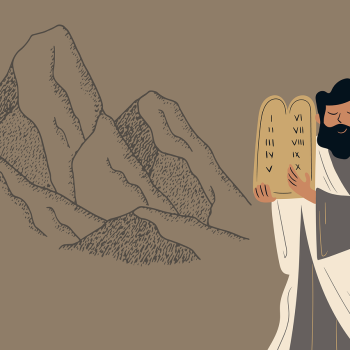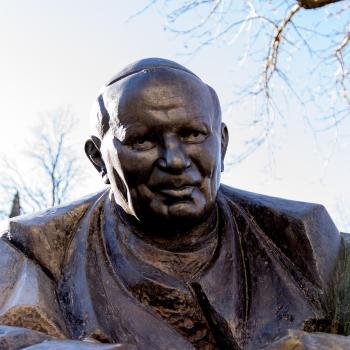
THE RELIGION GUY’S ANSWER:
In the vigorous discussions since World War Two about religion’s proper place in U.S. public schools, believers have been on both defense and offense. The defensive aspect got significant attention June 27 with the Supreme Court’s Mahmoud v. Taylor decision. www.law.cornell.edu/supremecourt/text/24-297/
The Court’s conservative 6-3 majority supported a plea from Muslim, Catholic, and Eastern Orthodox parents concerning a Maryland county’s new public school curriculum for elementary students through grade 5 that covers same-sex marriage and gender-identity transitions. The parents did not seek to end such instruction but objected because they were denied notification and the right to remove their children from schoolwork they found religiously offensive.
Some major church-and-state scholars said religious freedom under the Constitution’s Bill of Rights meant an easy decision favoring the parents, but they faced significant opposition. Both the federal district and circuit appeals courts backed the school district policy. So, among others, did the National Education Association, American Federation of Teachers, authors in PEN America, American Psychological Association, American Civil Liberties Union, Leadership Conference on Civil and Human Rights, National Women’s Law Center, Americans United for Separation of Church and State, and various LGBT+ organizations.
Liberal alarm
The three Supreme Court liberals who opposed the parents argued that opt-outs “impose impossible administrative burdens” on schools. (More than 1,000 other Maryland parents petitioned to withdraw their students.) And they are alarmed by a dangerous “chilling effect” as the Court majority “hands a subset of parents the right to veto curricular choice long left to locally elected school boards.” They believe limiting some students’ exposure to controversial ideas will profoundly “damage” public education nationwide and “presume public schools out of existence.”
The majority opinion cited two major Supreme Court precedents that protect particular religious claims. Amid wartime patriotism, the justices voted 6-3 in West Virginia v. Barnette (1943) to overturn a prior ruling so Jehovah’s Witness schoolchildren need not recite the Pledge of Allegiance, which their faith teaches is offensively pagan. In Wisconsin v. Yoder (1972), a unanimous Court allowed the Amish to withdraw children from mandatory high school and help perpetuate their unique religious community.
Last week, the Pew Research Center issued polling on the long-running debate over prayer in public schools, with a huge 37,000 sample allowing reliable breakdowns for each state. Over-all, 57% favored or “strongly” favored having teachers “lead their classes in prayers that refer to God but not to any specific religion.” That won majority support in 39 of the 50 states (and by 60% or higher in 19 states). Some 52% even supported teachers leading students “in prayers that refer to Jesus,” including majority support in 32 states.
Those numbers conflict with an Associated Press poll of 1,158 respondents, issued last week. There, 55% opposed teachers leading students in prayer, with 44% approving. Also, 60% opposed mandatory school times for private prayer and religious reading, with 39% approving. However, 58% favored having religious chaplains offer support services.
Current disputes
The Bill of Rights also forbids any federal law “respecting an establishment of religion,” and the Supreme Court by extension applies that to states. Conservatives who reject strict “separation of church and state” say the American Founders’ intent was merely to forbid a European-style governnent-established church. Interpretation of “establishment” affects efforts for more religious leeway, currently focused on three states:
Louisiana: On June 20, a federal appeals court panel ruled a 2024 law requiring classroom Ten Commandments displays is unconstitutional “establishment of religion.” The law directly violated the Supreme Court’s prohibition of Kentucky’s displays Stone v. Graham (1980), which the high Court will reconsider if it accepts an appeal. Notably, Stone was decided by 5-4 via an unusual unsigned order without the customary legal briefs and oral argument.
Texas: A federal lawsuit filed this week challenges this state’s mandatory Ten Commandments displays. On June 21, Governor Greg Abbott signed a different law mandating daily school times giving students and staff “an opportunity to participate in a period of prayer and reading of the Bible or other religious text.” Those participating must waiver that involvement is voluntary and they won’t file lawsuits. Prayers over a public address system are banned.
Oklahoma: This week, a citizen group filed in state supreme court against the new social-studies curriculum proposed by Superintendent of Public Instruction Ryan Walters and approved by the state board of education in February. It includes Jesus’s teachings and the role of biblical Christianity in American history and culture. A separate lawsuit is challenging Walters’ order that each classroom have a Bible to be used for instruction, plus a Ten Commandments display.
Supreme Court restrictions
The Supreme Court has restricted public schoolroom piety in this series of decisions:
McCollum v. Board of Education (1948) outlawed an Illinois program for various religious groups to provide voluntary classes in school buildings. However, Zorach v. Clausen (1952) added that “released time” classes are permissible if offered off campus. (In practice, this rarely occurs.)
Engel v. Vitale (1962) opposed teachers leading a brief, generic prayer to God formulated and authorized by government, i.e. the New York State Regents.
Abington v. Schempp (1963) dramatically outlawed Pennsylvania’s teacher-led Bible readings and recitations of the (specifically Christian) Lord’s Prayer. Notably, this ruling specified that “the Bible is worthy of study,” and likewise religion in general, “when presented objectively as part of a secular program of education.” (Such courses are surprisingly infrequent, though there’s this high school Bible textbook, prepared with multi-faith input: www.bibleliteracy.org/).
Wallace v. Jaffree (1985) overturned Alabama’s compromise of schoolroom minutes “for meditation or silent prayer” without requiring any particular belief. In this complex 6-3 ruling, justices filed three separate opinions against Alabama, and three favoring the moment of silence that included Chief Justice Warren Burger and his successor as chief, William Rehnquist.
Lee v. Weisman (1992) rejected by 5-4 clergy graduation prayers, as at a Rhode Island junior high school.
Santa Fe v. Doe (2000) outlawed by 6-3 student prayers via loudspeaker before football games, as at a Texas high school.
On the other hand, Westside Community Board v. Mergens (1990) ensures students’ freedom to organize voluntary prayer, worship, and religious discussions on campus on the same basis as other non-curricular clubs.











